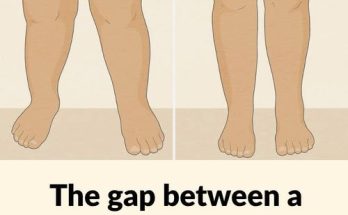Have you ever noticed someone with a long little fingernail—just the pinky—left uncut while the others are trimmed short? It might look like an odd detail at first, but this seemingly small choice carries a long and fascinating history. Across different cultures and eras, growing a pinky nail has been more than just a personal grooming decision. It’s been a powerful symbol—of wealth, knowledge, utility, rebellion, and even identity.
For older readers who remember the fashion quirks of the 1970s or the quiet status cues of the mid-20th century, the meaning of a single long fingernail might stir memories or spark curiosity. But for those unfamiliar with its deeper roots, the story of the pinky nail is much more than skin deep.
Whether you’ve seen it on a taxi driver, a musician, or someone at your local grocery store, here’s what it could really mean.
In Ancient China, It Was a Mark of Privilege and Power
Centuries ago in imperial China, the presence of a long fingernail—particularly on the pinky—was a visible sign of social status. It said, without words: “I don’t have to work with my hands.”
Manual labor, often associated with the working classes, made it impossible to maintain long, delicate nails. But among the elite, especially scholars, poets, and nobility, the long pinky nail became a badge of refinement and privilege. It showed that one’s life was ruled by intellect and status rather than physical toil.
To this day, remnants of that tradition persist. In parts of modern China, some older men (including a number of taxi drivers and businessmen) still grow their pinky nails long, a silent nod to a custom that once separated aristocracy from laborers.
A Quiet Nod to Erudition and Wisdom
Across the centuries, long nails weren’t just about money—they were also about the mind.
In both ancient Chinese and Greek societies, a long pinky nail could signal a person of learning—someone who spent their days reading, writing, or teaching rather than working with tools or tending to crops.
The idea was simple: physical labor would ruin a long nail. But intellectual work? That required only the mind. In that way, the nail became a subtle badge of erudition—something akin to spectacles or a book tucked under the arm.
This symbol of learning still holds quiet meaning for some, especially in Asian cultures, where the reverence for scholarship and quiet wisdom continues to shape traditions.
More Than Symbolism: A Practical Tool in Everyday Life
Beyond its historical and cultural significance, the pinky nail has served a surprisingly practical purpose for many people throughout history.
In Turkey, for example, it was commonly used to open cigarette wrappers or packages without damaging the contents inside. In other cultures, people used it to lift tabs, scratch off lottery tickets, or open plastic bags more easily.
It’s a humble reminder that even the smallest choices in grooming or fashion often evolve from real, everyday needs. What may look like a vanity or eccentricity could simply be a tool—one that travels with you and helps get the job done.
A 1970s Subculture Symbol—and Beyond
Fast-forward to the 1970s, and the long pinky nail took on entirely new meanings in Western culture—ones that many seniors today will remember.
During this era of intense self-expression and social upheaval, the pinky nail became linked to various subcultures, from musicians and artists to more controversial associations. Some individuals, particularly in nightlife and party scenes, grew their pinky nails longer as a discreet tool for drug use—a method that carried heavy connotations in the media.
But not everyone in the ’70s scene used the nail for illicit purposes. For many, it was simply a bold fashion statement, a way to rebel against conservative norms and declare one’s individuality.
Musicians, especially in jazz and funk circles, were often seen sporting a long pinky nail as part of their overall aesthetic. It became part of the look—just like flared pants, big sunglasses, and platform shoes.
Is It Just a Style Choice Today?
In modern times, the meaning behind a long pinky nail is less clear-cut. In many cases, it might mean nothing more than personal preference. But in other situations, it may still carry the echoes of its complex past.
For example, some people continue the practice because of cultural inheritance, carrying forward family or community traditions. Others adopt it for practical reasons—perhaps they still find it useful as a tool. Some simply find it stylish.
And yes, there are still cases where it might carry connotations from past decades—especially in circles where historical subculture fashion is revived and celebrated.
That’s why it’s so important not to rush to judgment when you see someone with a long pinky nail. You may be looking at someone with a deep connection to their roots, a creative spirit, or simply someone who likes how it looks.
What It Means Depends on Where—and When—You Look
The fascinating thing about the pinky nail tradition is that its meaning is deeply contextual. In some places, it signals high status. In others, it may represent rebellion, practicality, or even spiritual protection—some cultures believe that long nails, particularly on specific fingers, help preserve a person’s energy or aura.
There’s no universal definition. Like many cultural symbols, the pinky nail reflects the values and realities of the world around it.
That’s why, especially as we get older, it’s helpful to approach these kinds of traditions with curiosity instead of criticism. What seems unusual to us may have deep and valuable meaning to someone else.
A Quiet Reminder of Cultural Diversity
If nothing else, the long pinky nail is a quiet reminder that not everything is as it seems. It teaches us that history lives in the little things—in habits, in appearances, in the small ways we carry culture with us every day.
For many older Americans, especially those with global experience or cultural curiosity, recognizing these details can be a wonderful window into how others live, think, and remember their heritage.
Next time you see someone with a long pinky nail, you might smile and wonder:
Are they honoring an old tradition? Using it as a tool? Making a fashion statement? Or simply doing what feels right to them?
The answer may surprise you—or spark a conversation you never expected.



